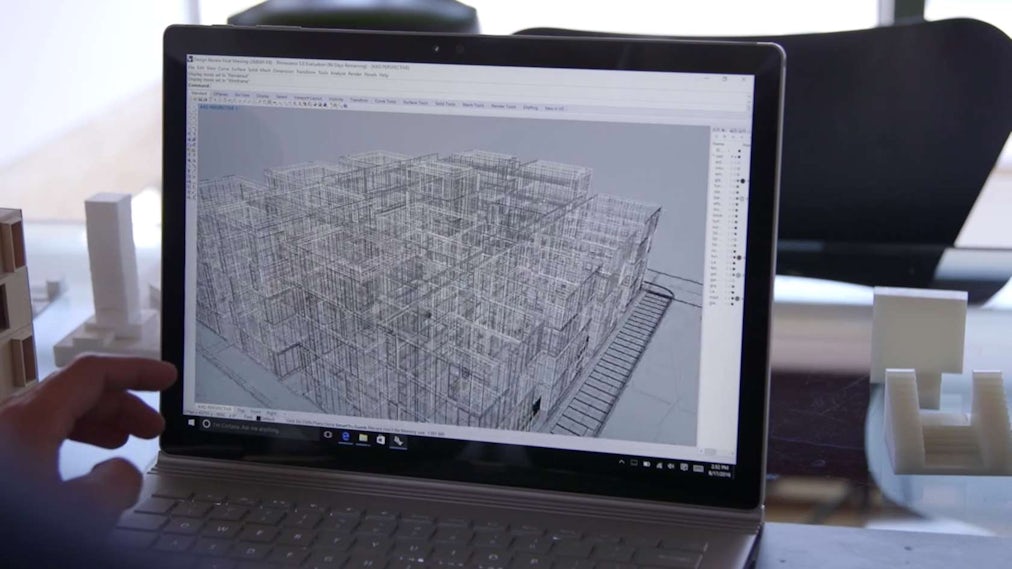A few weeks ago, we published an article outlining an in-depth tech test that would aim to uncover the benefits of using Microsoft’s Surface Book for the design and construction of complex architectural projects. The experiment involved five leading architecture firms and five real-world projects, each at a different stage of development from concept all the way through to construction.
This proved to be a fascinating study, granting a unique, behind-the-scenes look at some of the most exciting firms in the United States as they worked to bring their designs to fruition. Studying the processes behind each project, it became clear that the vital ingredients for the successful practice of architecture are as follows: power, mobility, efficiency, ideation and collaboration. Surface Book grants architects access to all five — here’s how.

1. Power
Johnston Marklee’s Nicholas Hofstede, one of the architects working on the Menil Drawing Institute in Houston, Texas, spoke of the laptop’s unparalleled power to handle AutoCAD, Rhino, Revit and all types of CAD programs architects use on a daily basis: “All of the programs that we use are completely compatible. Before, when we had an iPad, it just didn’t run software that we need. The Surface Book really enables us to do everything.”

2. Mobility
Juan Calvo, Vice President of Design at Oppenheim Architecture, waxed lyrical about the Surface Book’s versatility, having utilized it as both a laptop and a tablet in the studio and on site respectively: “I’m the type of person that sketches by hand, and with this, I can take my sketches from the site and transfer them back to the office, which is important. You go to the site to resolve problems, and the faster you resolve them, the better.”

3. Efficiency
Meanwhile, Stanley Saitowitz — Principal of Stanley Saitowitz | Natoma Architects — revealed a key advantage in using technology with the speed and graphic capabilities of Surface Book: scalability. “The amazing thing about the tools that you have today is that with almost the same scale of office, we are now in position to do projects almost a hundred-fold the size of what we were doing when we started.”

4. Ideation
A+I’s Associate Principal Sommer Schauer prized the mobility of the laptop particularly for its use in sketching over existing site imagery, effortlessly recording every idea as she envisions it: “The Surface Book has been great for taking to the site, for taking photos there, for drawing on those photos. The ability to have a record of that is very different than the old-school method of drawing on the wall and hoping the carpenter takes that detail and does something with it.”

5. Collaboration
Finally, Dan Wood — Co-Founder of New York–based firm WORKac — highlighted the ease with which his team can communicate between office, site and home: “For us, technology is really a lot about … [the] communication of ideas. What’s been great about the Surface Book is that it allows us to get these ideas down immediately … The Surface Book is a great tool to communicate between the virtual world and the physical world.”
For full videos from all five practices, check out the other features in our series on “The Architects’ Laptop:
Johnston Marklee’s Museum of Drawings Is Brought to Life by the Digital Power of Surface Book
Oppenheim Architecture’s Ode to Engineers Transforms From Concept to Construction in Miami
A+I Uses Real-Time Digital Sketching to Reinvent Workspace Design
WORKac Strikes the Perfect Work-Life Balance With a Digital Drawing Board




